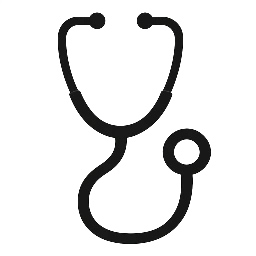NURS 6051/NURS 5051 Module 4: Technologies Supporting Applied Practice and Optimal Patient Outcomes (Weeks 6-8)
Laureate Education (Producer). (2018). Informatics Tools and Technologies [Video file]. Baltimore, MD: Author.
Learning Objectives
Students will:
Evaluate healthcare technology trends for data and information in nursing practice and healthcare delivery
Analyze challenges and risks inherent in healthcare technology
Analyze healthcare technology benefits and risks for data safety, legislation, and patient care
Evaluate healthcare technology impact on patient outcomes, efficiencies, and data management
Analyze research on the application of clinical systems to improve outcomes and efficiencies
Due By Assignment
Week 6, Days 1–2 Read/Watch/Listen to the Learning Resources.
Compose your initial Discussion post.
Week 6, Day 3 Post your initial Discussion post.
Begin to compose your Assignment.
Week 6, Days 4-5 Review peer Discussion posts.
Compose your peer Discussion responses.
Continue to compose your Assignment.
Week 6, Day 6 Post at least two peer Discussion responses on two different days (and not the same day as the initial post).
Week 6, Day 7 Wrap up Discussion.
Week 7, Days 1-7 Continue to compose your Assignment.
Week 8, Days 1-6 Continue to compose your Assignment.
Week 8, Day 7 Deadline to submit your Assignment.
Photo Credit: Westend61
Learning Resources
Note: To access this week’s required library resources, please click on the link to the Course Readings List, found in the Course Materials section of your Syllabus.
Required Readings
McGonigle, D., & Mastrian, K. G. (2017). Nursing informatics and the foundation of knowledge (4th ed.). Burlington, MA: Jones & Bartlett Learning.
Chapter 14, “The Electronic Health Record and Clinical Informatics” (pp. 267–287)
Chapter 15, “Informatics Tools to Promote Patient Safety and Quality Outcomes” (pp. 293–317)
Chapter 16, “Patient Engagement and Connected Health” (pp. 323–338)
Chapter 17, “Using Informatics to Promote Community/Population Health” (pp. 341–355)
Chapter 18, “Telenursing and Remote Access Telehealth” (pp. 359–388)
Dykes, P. C., Rozenblum, R., Dalal, A., Massaro, A., Chang, F., Clements, M., Collins, S. …Bates, D. W. (2017). Prospective evaluation of a multifaceted intervention to improve outcomes in intensive care: The Promoting Respect and Ongoing Safety Through Patient Engagement Communication and Technology Study. Critical Care Medicine, 45(8), e806–e813. doi:10.1097/CCM.0000000000002449
HealthIT.gov. (2018c). What is an electronic health record (EHR)? Retrieved from https://www.healthit.gov/faq/what-electronic-health-record-ehr
Healthcare Information Management and Systems Society. (2018). Electronic health records. Retrieved from https://www.himss.org/library/ehr/
Rao-Gupta, S., Kruger, D. Leak, L. D., Tieman, L. A., & Manworren, R. C. B. (2018). Leveraging interactive patient care technology to Improve pain management engagement. Pain Management Nursing, 19(3), 212–221. doi:10.1016/j.pmn.2017.11.002
Note: You will access this article from the Walden Library databases.
Skiba, D. (2017). Evaluation tools to appraise social media and mobile applications. Informatics, 4(3), 32–40. doi:10.3390/informatics4030032
Note: You will access this article from the Walden Library databases.
Required Media
Laureate Education (Producer). (2018). Public Health Informatics [Video file]. Baltimore, MD: Author.
Accessible player
–Downloads–
Laureate Education (Producer). (2018). Electronic Records and Managing IT Change [Video file]. Baltimore, MD: Author.

Leave a Reply